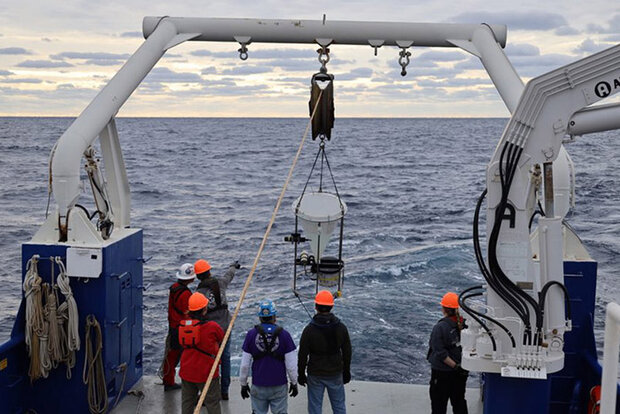A collaborative effort investigates the ocean's biological carbon pump

Scientists retrieve a sediment trap from a depth of 600 meters in the Gulf of Mexico. Credit: NOAA

Scientists retrieve a sediment trap from a depth of 600 meters in the Gulf of Mexico. Credit: NOAA
On the evening of November 29th, the 116-foot R/V Pelican left the docks of Cocodrie, LA with a team of scientists from AOML, the U.S. Geological Survey (USGS), and the University of South Carolina for the open Gulf of Mexico. Traversing 100 nautical miles of dark ocean with only the lights of stars and deep-sea oil rigs in all directions, the research vessel made its way back to a moored sediment trap located hundreds of meters below the surface.
At sunrise the next morning, an acoustic pulse sent from a transducer dangled from ship’s starboard-side relays a signal towards the ocean floor that sends the trap, tethered to a giant balloon-like buoy, skyrocketing to the surface. Over the next several months, the team will process and examine the flurry of microscopic shells and environmental DNA (eDNA) of biological debris collected by the trap, known as “marine snow.” This collaborative NOAA–USGS research project uses these sediment trap samples to investigate the biological carbon pump, the ocean’s role in removing atmospheric carbon, and paleoclimatology.